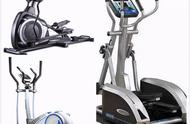最常规的做法是躯干基本平行地面,想象肘部上提,而不是手。
对于竖直方向,更常见的动作依然是推,比如哑铃或杠铃的推举,而练习引体向上或高位下拉的人相对较少。但拉的动作对于平衡整个身体以及肩关节的保护也很重要。

上推前后缩并下压肩胛骨,以免肩部上耸,推起后保持肘微屈。

最常规的做法是下拉同时下压肩胛骨,避免脊柱大幅度前屈后伸。
不能出门会改变生活的方方面面,如果这时有条件继续规律运动,能提高身体对疾病的抵抗能力,也可以帮助你更好地面对心理的波动。
注:文中图片均为作者供图
参考文献
[1] 国家体育总局. 全民健身指南. 2018.07.17.
[2] DiPietro L, Buchner DM, Marquez DX, et al. New scientific basis for the 2018 U.S. Physical Activity Guidelines. J Sport Health Sci. 2019;8(3):197-200.
[3] National Strength and Conditioning Association ; G. Gregory Haff, N. Travis Triplett, editors. Essentials of Strength Training and Conditioning, 4th ed. 2016.
[4] Bull FC, Al-Ansari SS, Biddle S, et al. World Health Organization 2020 guidelines on physical activity and sedentary behaviour. Br J Sports Med. 2020;54(24):1451-1462.
[5] Ross R, Chaput JP, Giangregorio LM, et al. Canadian 24-Hour Movement Guidelines for Adults aged 18-64 years and Adults aged 65 years or older: an integration of physical activity, sedentary behaviour, and sleep. Appl Physiol Nutr Metab. 2020;45(10 (Suppl. 2)):S57-S102.
作者:代天医
编辑:odette、luna
本文来自果壳,未经授权不得转载.
如有需要请联系sns@guokr.com















